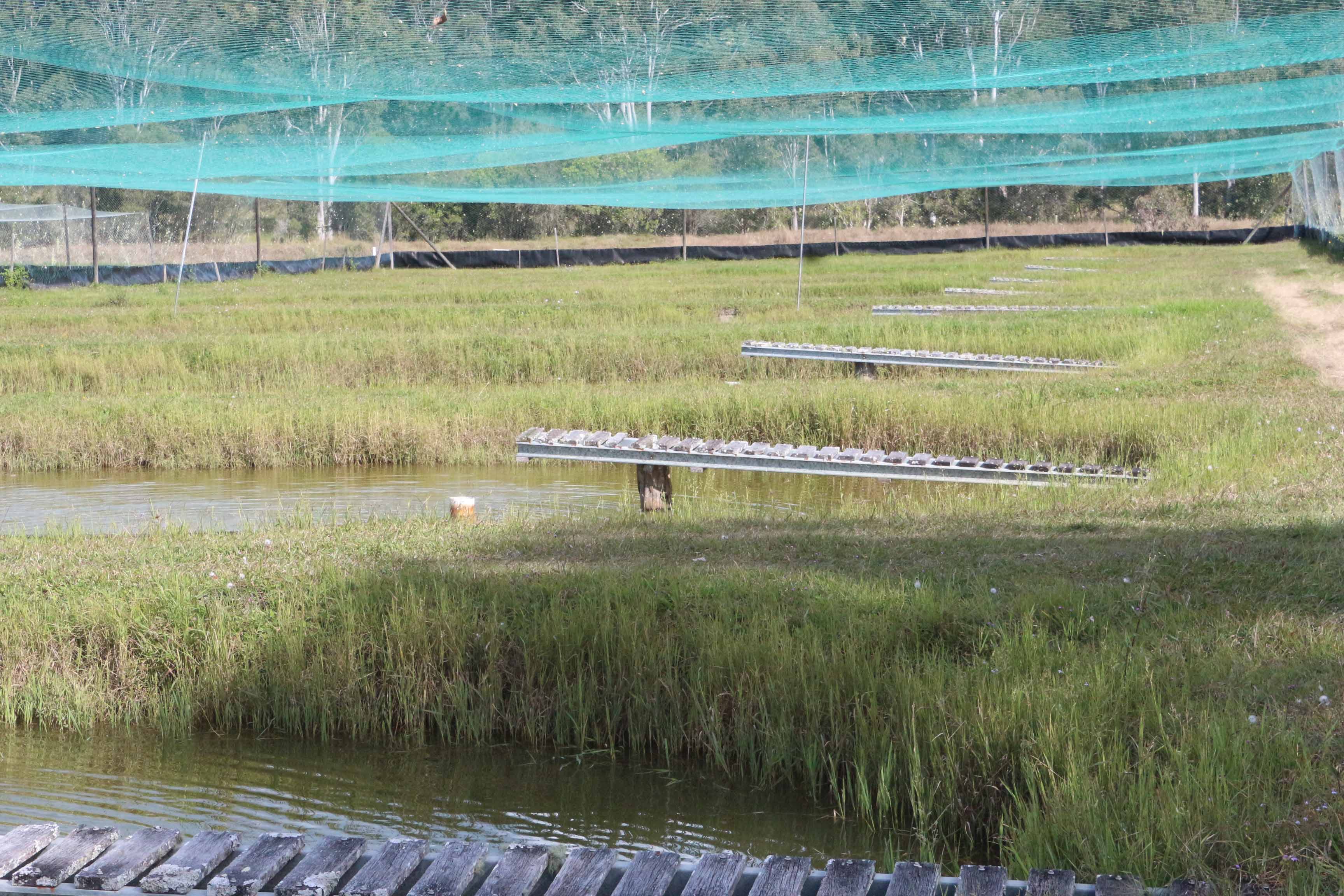Innovations
Nursery Phase
Some of the research in this area is being done by us on our property and in conjunction with JCU Cairns by Damian Rigg under the supervision of Clive Jones. The aim is to help develop and learn about husbandry practices for craylings with the ultimate goal of implementing a high-density nursery specifically tailored to the requirements of craylings. We envisage a day when each farm will implement their own nursery facility ready to accept craylings from hatcheries. Exactly how the nursery system will look like is still being hotly debated and experimented on. But what is clear is that such a system would be a huge benefit. It will allow farmers to overlap production i.e. the redclaw in large grow-out ponds can keep growing while the craylings gain some size and weigh in a separate specialised system tailored to their needs.
Craylings can be delivered very cheaply in much greater numbers with excellent transport survival to farmers as compared to the old way of buying advanced juveniles or broodstock. They can then be stocked into an on-farm nursery for 6 weeks to grow to around 2 grams. Small purpose-built nursery ponds might have a harvest pit and are enclosed for warmth & predators protection.
We don’t know the exact nature of how a nursery system would look like yet. However we know that craylings in tanks have a slower growth rate and poorer survival than in earth ponds; but we also need the total control that tanks can offer. So, is the solution some type of hybrid system between earth ponds and tanks?
The holy grail of redclaw farming would be to spawn red claw eggs in the middle of winter, incubate the eggs to craylings and stock them into a on-farm warmed nursery system to grow to around 2 grams. Then transfer juveniles into grow-out ponds at a time when the outdoor ponds are just beginning to get the spring warmth. At that time females in outdoor ponds would only be thinking about spawning naturally and we already have 2-gram juveniles! All this overlap of production would extend the grow-out season by as much as 3 months! Which means that in the more northerly regions of Australia we potentially could have 2 crops a year.
Well, that’s the dream, but we believe with the work that’s recently been done within our industry together we can make it happen.

